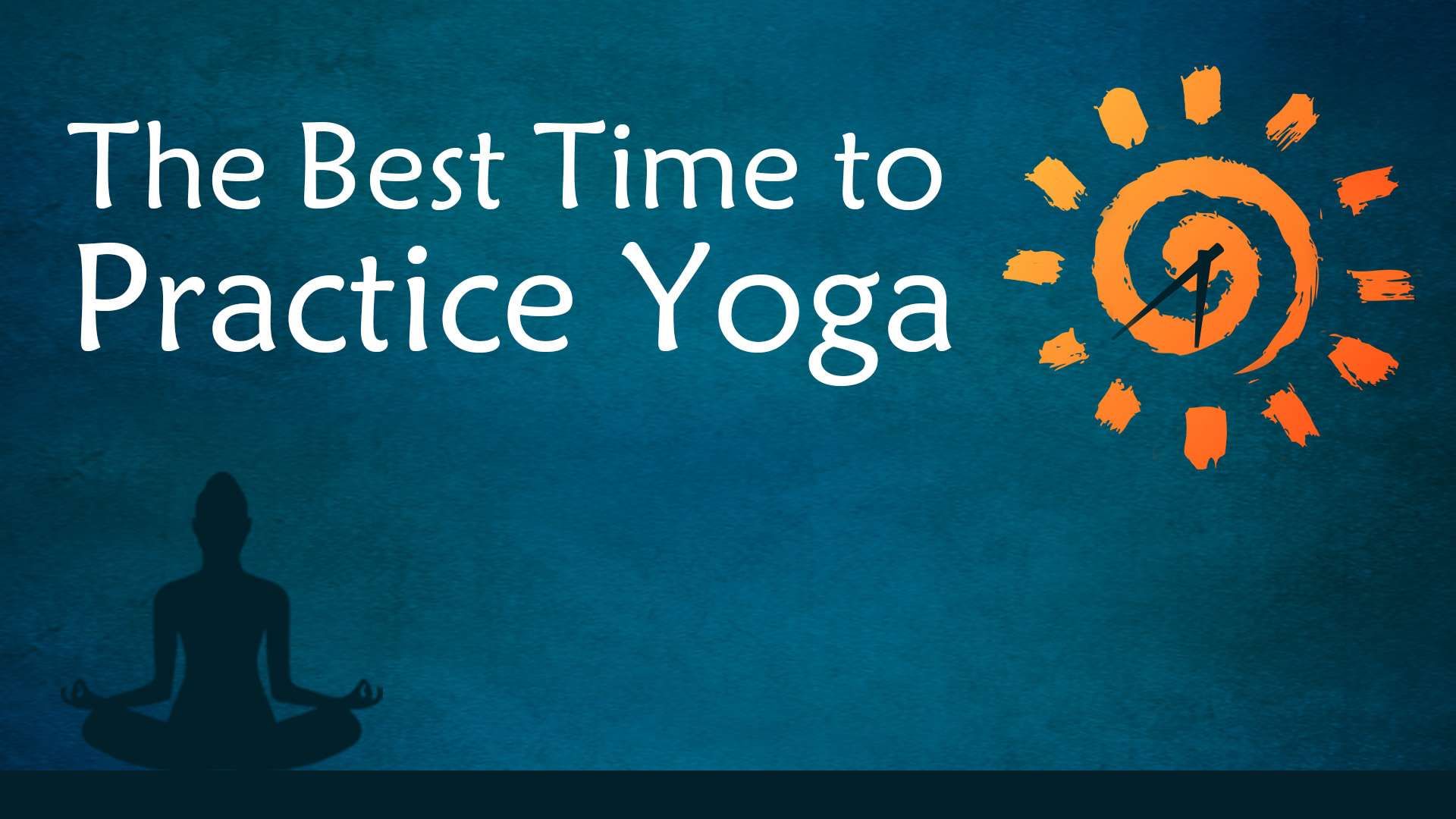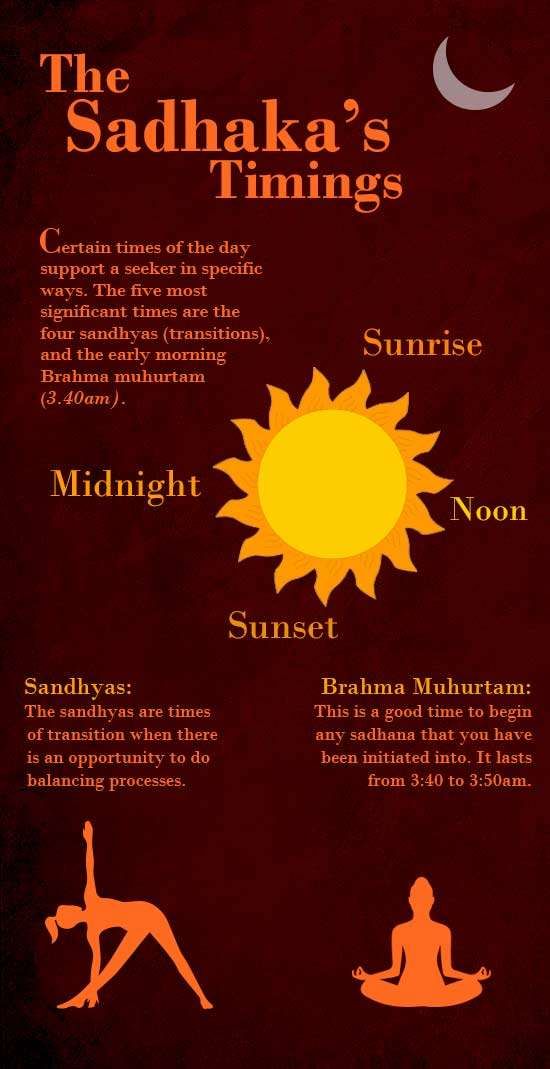The Best Time to Meditate and Do Yoga
Sadhguru looks at the best time of day to do your yoga practices, and explains that this depends on what you are working towards.

Q: Sadhguru, what is the significance of doing certain practices before sunrise or after sunset?
Sadhguru: Practices like Surya Namaskar and Shiva Namaskar should happen at these times of transition, in the twilight zone between night and day. During the sandhya Kalas, around sunrise and sunset, everything is in a state of flux. If you practice at that time, your ability to transcend limitations is better because your life energies are in a state of flux. That is one aspect of it.Is it Hot? Not the Best Time!
Another aspect is that all these practices generate a certain amount of ushna. There is no equivalent for the word “ushna” in English, but it usually gets translated as heat. Heat, not in terms of temperature but as one of three aspects – the other ones being sheeta and pitta – that control various functions in the human system. If you have excess ushna, or in other words, if your samat prana is high, you feel your body is hot, but if you take your temperature, it is normal. Ushna is not like having a fever – it is experiential heat.
Samat prana or samana vayu is in charge of maintaining the warmth of the body. A yogi always wants to keep the body slightly on the warmer side because heat also indicates intensity and dynamism. If the body cools below a certain point, it creates inertia in the system. Almost all the practices are designed to take you to a somewhat higher realm than what people normally live at. A higher realm does not mean a higher level of metabolism. If the metabolism becomes high, you will exhaust yourself physically.
When your energies are in a higher realm, your body will function at an easier pace. We can prove this to you in a matter of three to six weeks – if you do certain practices and get your energies to a certain level, your physiological factors will settle down and go at an easier pace. When your energies are low, your body tends to go at a higher pace to keep the life process going, which will deplete the system. If your bodily functions go at a certain speed, your mind will go crazy, and above all, it will reduce your lifespan.
We are conscious that doing practices will raise the ushna in the system. If the temperature outside is high and the ushna rises beyond a certain point, it will cause cellular damage. That is why yogic practices are always to be done in the cooler hours of the day. Between day and night, there is a transition that reduces the friction within the system, and therefore, the practices will generate less ushna. Because yoga evolved in tropical climates in India, we always said that all yogic practices must happen before 8:30 in the morning or after 4:00 or 4:30 in the evening.
Times of Transition in Yoga & Meditation
Subscribe
Click Image to Enlarge

With yogic practices, you are trying to remold yourself. You may have great regard and respect for your parents, but you do not want to end up just the way they made you, or just the way they are. You want to be something different or something more. If you only psychologically and emotionally remold yourself, at some point in your life, you will fall back. There are many people who, when they were 18, said “No way!” and rebelled against their parents, but by the time they are 45, they walk, sit, talk, and behave like them, because mental changes will only go that far.
Attitudinal changes will not last. After some time, as life situations change and you become less conscious, you will fall back. If you say you are the way you are because your father was like that or because it is in your genes, you are saying you are a creature of the past. If you want to be a being of the future, it is necessary to remold the fundamentals of who you are. That is what we are trying to do with yogic practices – we want to remold ourselves into something entirely different.
The best time of the day to do this is always the sandhya when the energies on the planet are going through a certain transition and the friction within the system is greatly reduced, which allows the remolding to happen more easily. There are other aspects to it, but these are the two most fundamental reasons why yoga is practiced morning and evening.
Brahma Muhurta – The Best Time for Spiritual Progress
If you are looking for dramatic spiritual progress, you must do your yogic practices before sunrise, which usually means starting the practices at the Brahma Muhurta, which is the last quarter of the night - anywhere between 3:30 a.m. to 5:30 or 6:00 a.m., or whatever is the time of sunrise. At that time, there is a certain process that you will become naturally conscious of if you do your practices in a certain way. If you are doing yogasanas, once your biology adjusts itself to the planet’s biology, every morning, you will wake up by yourself between 3:20 and 3:40.
This is not a confession, but it is supposed to be a matter of pride for me – when I was a little boy, and even when I became a little older, I just could not wake up in the morning, no matter what. It took an hour-long effort from all the family members to wake me up. After some time, they gave up calling me because I anyway slept through all the calling. Since shaking did not work either, they would make me sit up – I would sit up and fall asleep again.
Then they would drag me out of the bed. My mother would put toothpaste on the brush and give it to me. I would stick it in my mouth and sleep off. After I brushed my teeth, she would say, “Bathe before you go to school.” I would go into the bathroom, sit down there, and fall asleep. Once I was awake, you could not stop me, but waking me up was something else. If no one woke me up, I would sleep until noon time. Only when I got too hungry, I would wake up – otherwise, nothing else would wake me up.
I started practicing yoga at the age of 11, and after about 12 to 18 months, it began to happen, and has been so ever since, that when I first wake up and check the time, it is always just before 3:40. I may choose to get up or to lie down again depending upon what time I went to bed, but every day, no matter which time zone I am in, for at least one moment, I am awake at that time, because once you do certain things with your system, your biology is in sync with the biology of the planet. 3:40 is not a time that someone came up with – there is something within the human system that is connected to the planet and will make you come awake.
The Brahma Muhurta is the best time for you to do practices if you want to transcend your physical nature or know dimensions that we refer to as spiritual. But if you are looking just for physical health, then the sandhya kala around sunrise is the best time to do practices.
தினமும் யோகா செய்ய சரியான நேரம் எது?
Editor’s Note: Excerpted from Sadhguru’s discourse at the Isha Hatha Yoga School’s 21-week Hatha Yoga Teacher Training program. The program offers an unparalleled opportunity to acquire a profound understanding of the yogic system and the proficiency to teach Hatha Yoga. The next 21-week session begins on July 16 to Dec 11, 2019. For more information, visit www.ishahathayoga.com or mail info@ishahatayoga.com
A version of this article was originally published in Isha Forest Flower October 2015. Download as PDF on a “name your price, no minimum” basis or subscribe to the print version.




